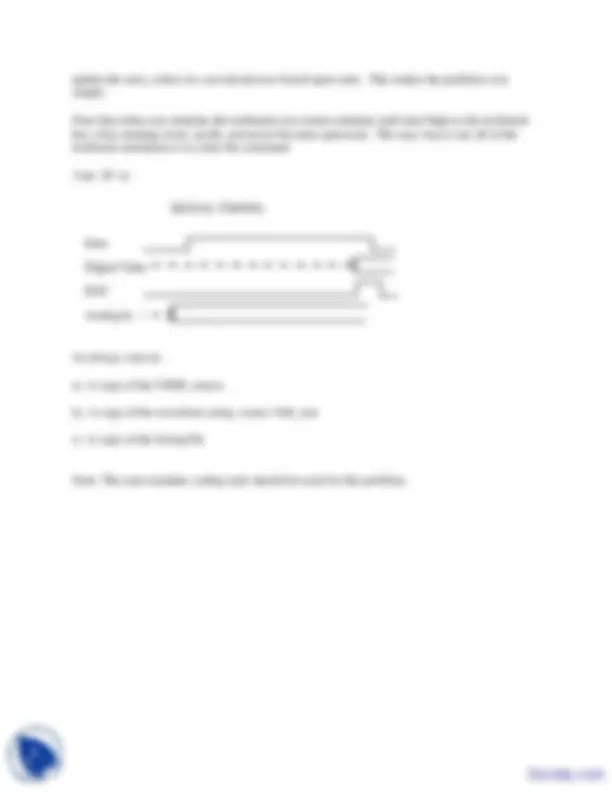



Study with the several resources on Docsity

Earn points by helping other students or get them with a premium plan


Prepare for your exams
Study with the several resources on Docsity

Earn points to download
Earn points by helping other students or get them with a premium plan
Community
Ask the community for help and clear up your study doubts
Discover the best universities in your country according to Docsity users
Free resources
Download our free guides on studying techniques, anxiety management strategies, and thesis advice from Docsity tutors
Instructions for modeling a successive approximation a to d converter controller using vhdl. Students are required to construct a model of the sar controller/register digital subsystem and simulate the testbench. Details on the operation of the converter, the ports required, and the basic conversion process.
Typology: Exercises
1 / 2

This page cannot be seen from the preview
Don't miss anything!


PS9 - PROJECT STEP SEQ_EX - Sequential Machine Example
In this problem you are to use VHDL to model a Successive Approximation A to D converter controller.
The test bench for this problem is in ~/ee762_assign/sar_tb.vhdl The do file for simulation is sar_tb.do
Successive Approximation A to D is achieved by setting a Successive Approximation Register to the 50% value, i.e., “10000000”. This is then converted to analog in a D to A converter. The analog input is compared to this value. If the analog input is higher than the output of the D to A, over_under indicates that the value is under and the SAR register is updated to “11000000”. If the analog input is less than the DAC output, over_under indicates that the DAC value is over and the next SAR value is set to “01000000”. This continues bit by bit until the A to D conversion is complete.
The testbench for this problem models the D to A converter and the analog comparator which outputs the digital over_under signal (DAC over = ‘1’, DAC under = ‘0’). You are to construct a model of the SAR Controller/SAR register digital subsystem. The ports you will need are shown in the following diagram.
SAR Controller/Reg.
D to A converter
analog 8 input
over_under
start
sarclk eoc
sar_val 8 digital_val
Basic operation for a conversion is as follows. When start transitions high the analog input is valid and is captured by a capture and hold circuit. This aspect of the system is not directly modeled. The analog input value will remain constant during the conversion. Your subsystem will transition through the value for the SAR and when you have finished the 8 bits of the sar_var, eoc will be asserted. At the same time eoc is asserted the digital value is output. When start returns low in response to eoc going high, eoc is reset.
When writing the VHDL code to model the SAR Controller/Register refer to the lecture on state machine modeling. Use a process for the latching of values from next_values signals. Then
update the next_values in a second process based upon state. This makes the problem very simple.
Note that when you simulate the testbench you cannot simulate until time’high as the testbench has a free running clock, sarclk, and never becomes quiescent. The easy way to see all of the testbench simulation is to enter the command
run 20 us
Start
Digital Value
EOC
Analog In
As always, turn in:
a) A copy of the VHDL source.
b) A copy of the waveform using zoom->full_size
c) A copy of the listing file
Note: The state machine coding style should be used for this problem.